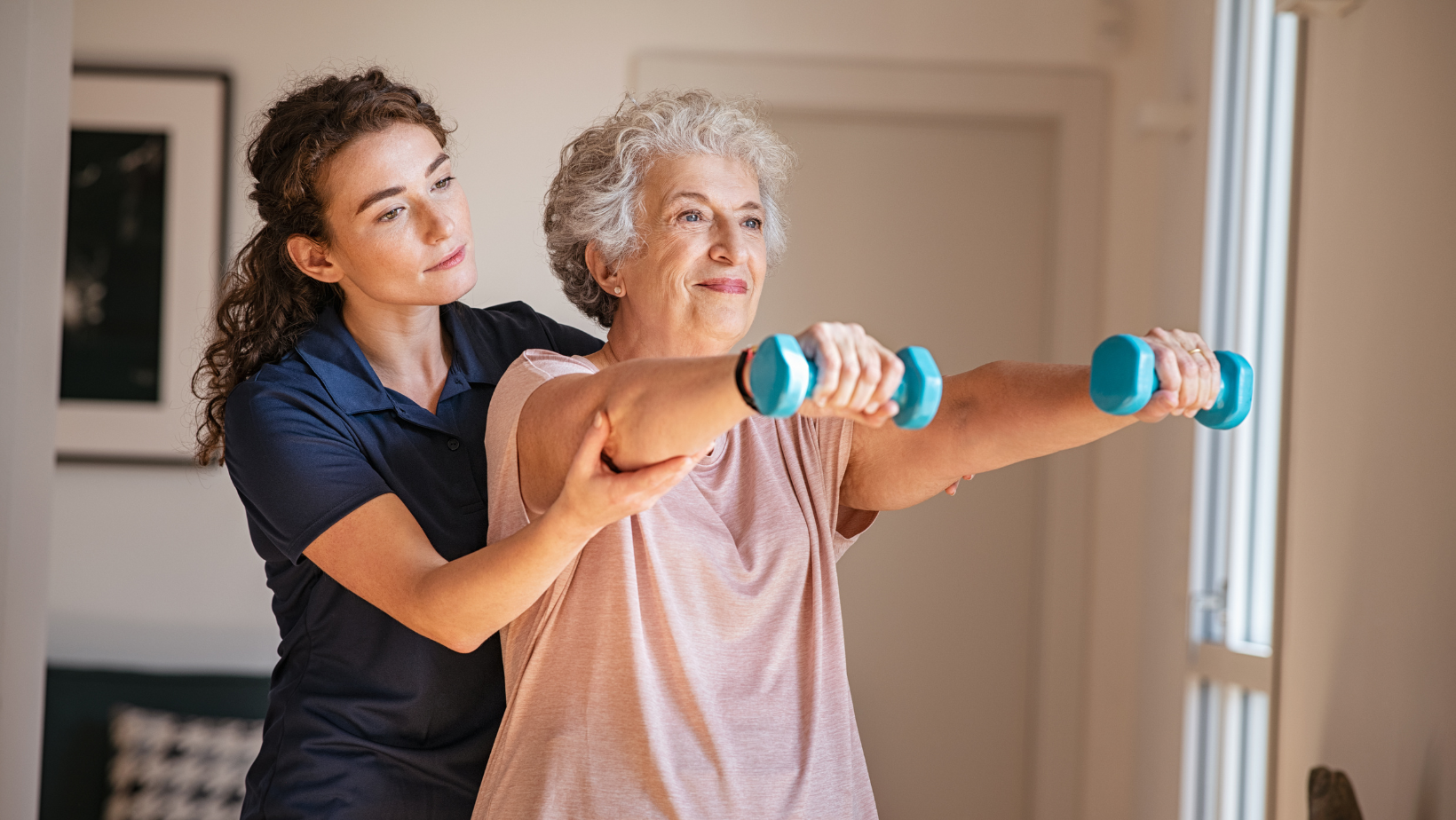Physical therapy is designed to help individuals maintain or restore their physical health. It can be used to strengthen muscles, improve range of motion, and reduce pain. Elderly persons who have had an accident, stroke, or surgery may receive physical therapy rehabilitation after being discharged from the hospital.
This treatment is administered by physical therapists in an inpatient or outpatient setting. During outpatient rehab, individuals are prescribed certain exercises to complete regularly between appointments. Caregivers can assist seniors in carrying out their exercises safely at home. And here’s how!
Home Care & Physical Therapy
Transportation
Seniors attending physical therapy appointments may have a difficult time getting to and from their rehab clinic. Due to their health, they may not be able to drive at all, or they may struggle to get into and out of the car. Caregivers can provide safe transportation and ensure that a senior is able to meet with their physical therapist on time.
Transportation assistance can also provide peace of mind to the entire family. Family members can maintain their own schedules and avoid taking off work, while knowing their loved one is getting the support and treatment they need.
Comfort
Imagine doing a new activity that you are struggling with in front of an audience of strangers. This could make you feel embarrassed or anxious. Seniors may feel this way when doing rehabilitation exercises at an inpatient facility because they are surrounded by others.
Performing physical therapy exercises at home can make seniors feel more comfortable. They can perform exercises in the privacy of their home — away from unfamiliar sights, sounds, and faces. And with the assistance of a caregiver, seniors can receive the support they might need to carry out their exercises successfully.
RELATED CONTENT: How Caregivers Can Help with Fall Prevention Exercises
Motivation
Seniors can easily get discouraged with their outpatient therapy because the exercises are challenging. Each exercise is designed to push joints and stretch muscles. Individuals might also feel like they are not making progress quickly enough — even though they have been doing their routine. These feelings could lead a senior to stop doing their exercises altogether.
However, the presence and support of a caregiver can help seniors remain engaged and motivated to complete their physical therapy at home. A caregiver can act like a coach or cheerleader to help seniors through each repetition. Caregivers can count aloud and keep track of repetitions. They can monitor for signs of progress and share those successes with a senior.
While this might seem simple, it can have a huge impact on the outlook and motivation of a senior to stay engaged in physical therapy.
Safety
Caregivers can also watch seniors carefully during their exercises to help them remain safe. Some exercises may test balance or seniors may become tired after performing a few exercises, which can cause seniors to be vulnerable to falling.
Caregivers can provide a steady hand and help prevent falls at home. They can also help a senior pick the best place in the home to perform their exercises — like in a sturdy chair or next to a countertop. Additionally, caregivers can continually monitor the home for safety hazards that could cause a senior to fall as they perform in daily activities.
RELATED CONTENT: Balance Exercises for Seniors
Heat & Ice
As part of a senior’s recovery, they may need to put heat pads or ice packs on a muscle or joint. While this sounds simple and may provide great pain relief, it can actually be challenging for some seniors to manage.
For example, if a senior has had a hip or knee replacement, it can be very tiresome — and even dangerous — for them to get to the freezer to retrieve an ice pack or to the microwave to heat up a rice bag. They could also struggle to get their leg in a comfortable position and to hold this position.
A helping hand can go a long way in helping seniors maintain the proper amount of heat and ice on an affected area. Caregivers can also keep an eye on the clock so that heat or ice isn’t left on the area for too long.
Care Coordination
Caregivers are also great at communicating with healthcare professionals, like physical therapists, to coordinate care. Because a caregiver spends a lot of one-on-one time with a senior, they can see where a senior is struggling and where they are making progress. Thus, caregivers can share valuable insights with physical and occupational therapists regarding a patient’s recovery.
And this coordination goes beyond just physical therapy. Caregivers also have insight into a senior’s medical history, existing medications, and other aspects of care. So, they can keep everyone informed from family members to general physicians and specialists. This coordination can help everyone stay on the same page and create the best care plans for the patient.
Reducing Hospital Readmissions
The ultimate role of caregivers in physical therapy is to prevent injury at home. Seniors who are undergoing physical therapy, especially those who have had surgery or experienced a major medical event, are prone to falls — which can be dangerous and even deadly among seniors. Accidents can cause seniors to be admitted to the hospital and create more obstacles to recovery.
When caregivers can assist with physical therapy, we can help reduce the risk of falls and hospital readmission to keep seniors healthy, happy, and at home. To learn more about how Caring Senior Service can be involved in outpatient physical therapy, reach out to your local office today.


